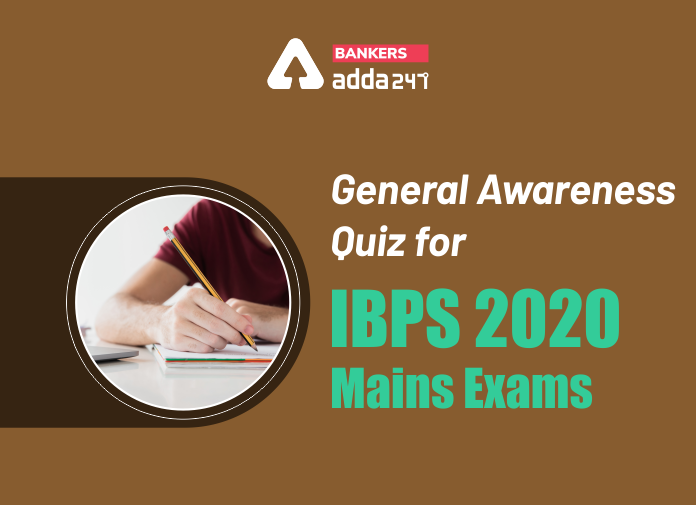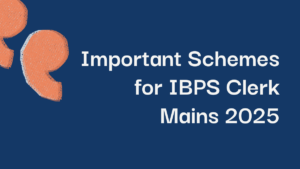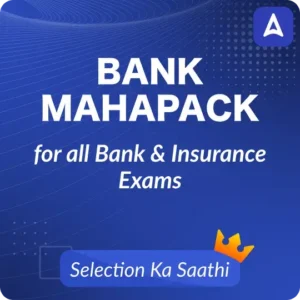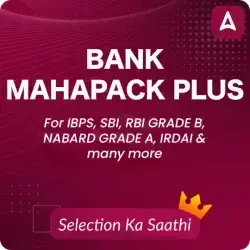Q1.What is Priority Sector Lending?
(a)A specially marked territory or enclave within the national borders of a country that has more liberal economic laws than the rest of the country
(b)A financial inclusion program of the Government of India open to Indian citizens
(c)A financial product commonly sold by banks, thrift institutions, and credit unions
(d)It means those sectors which the Government of India and Reserve Bank of India consider as important for the development of the basic needs of the country and are to be given priority over other sectors
(e)None of the above
Q2.Priority Sector includes which of the following categories?
(a)Agriculture
(b)Micro, Small and Medium Enterprises (MSME)
(c)Export Credit
(d)Education
(e)All of the above
Q3.What are Priority Sector Lending Certificates (PSLCs)?
(a)A certificate issued by a bank to a person depositing money for a specified length of time at a specified rate of interest
(b)A mechanism to enable banks to achieve the priority sector lending target and sub-targets by purchase of these instruments in the event of shortfall
(c)An unsecured promissory note with a fixed maturity of rarely more than 270 days
(d)A negotiable instrument is a document guaranteeing the payment of a specific amount of money, either on demand, or at a set time, whose payer is usually named on the document
(e)All of the above
Q4.Which Organisation has assigned priority sector lending (PSL) status to India’s startup sector?
(a)SBI
(b)Ministry of Finance
(c)RBI
(d)NITI Ayog
(e)Indian Banking Association
Q5. What is/are the guidelines for PSL for scheduled commercial banks?
(a)10% of the priority sector advances or 10% of the total net bank credit, whichever is higher should go to weaker section
(b)40% of the total net bank credit should go to a priority sector advances
(c)18% of the total net bank credit should go to agricultural advances.
(d)5 of ANBC or Credit Equivalent Amount of Off-Balance Sheet Exposure, whichever is higher should go to Micro enterprises
(e)All of the above
Q6.Which of the following is Not a category under ‘Agriculture’?
(a)Farm credit
(b)Agriculture infrastructure
(c)Land Lease
(d)Ancillary activities
(e)None of the above
Q7.The applicable limit and purpose for loans for renewable energy under priority sector is set up at what amount for individual households?
(a)₹ 1 million
(b)₹ 2 million
(c)₹ 3 million
(d)₹ 4 million
(e)₹ 5 million
Q8.The loan limit for education under priority sector is-
(a)₹ 1 million
(b)₹ 2 million
(c)₹ 3 million
(d)₹ 4 million
(e)₹ 5 million
Q9.Which of the following borrowers is/are included under Weaker Sections under priority sector?
(a)Small and Marginal Farmers
(b)Scheduled Castes and Scheduled Tribes
(c)Distressed farmers indebted to non-institutional lenders
(d)Self Help Groups
(e)All of the above
Q10.What is the limit for housing loans to individuals in metropolitan centres (with population of ten lakh and above under priority sector?
(a)₹1.5 million
(b)₹2.5 million
(c)₹3.5 million
(d)₹4.5 million
(e)₹5.5 million
Solutions
S1.Ans.(d)
Sol.Priority Sector Lending means those sectors which the Government of India and Reserve Bank of India consider as important for the development of the basic needs of the country and are to be given priority over other sectors.
S2.Ans.(e)
Sol.Priority Sector includes the following categories:
Agriculture
Micro, Small and Medium Enterprises (MSME)
Export Credit
Education
Housing
Social Infrastructure
Renewable Energy
S3.Ans.(b)
Sol.Priority Sector Lending Certificates (PSLCs) are a mechanism to enable banks to achieve the priority sector lending target and sub-targets by purchase of these instruments in the event of shortfall. This also incentivizes surplus banks as it allows them to sell their excess achievement over targets thereby enhancing lending to the categories under priority sector.
S4.Ans.(c)
Sol.The Reserve Bank of India has assigned priority sector lending (PSL) status to India’s startup sector.
S5.Ans.(e)
Sol.RBI guidelines for PSL for scheduled commercial banks:
40% of the total net bank credit should go to a priority sector advances.
10% of the priority sector advances or 10% of the total net bank credit, whichever is higher should go to weaker section.
18% of the total net bank credit should go to agricultural advances. Within the 18 percent target for agriculture, a target of 8 per cent of Adjusted Net Bank Credit (ANBC) or Credit Equivalent Amount of Off-Balance Sheet Exposure, whichever is higher is prescribed for Small and Marginal Farmers, to be achieved in a phased manner.
5 of ANBC or Credit Equivalent Amount of Off-Balance Sheet Exposure, whichever is higher should go to Micro enterprises.
S6.Ans.(c)
Sol.The activities covered under Agriculture are classified under three sub-categories viz. Farm credit, Agriculture infrastructure and Ancillary activities.
S7.Ans.(a)
Sol.Bank loans up to a limit of ₹ 150 million to borrowers for purposes like solar based power generators, biomass based power generators, wind mills, micro-hydel plants and for non-conventional energy based public utilities viz. street lighting systems, and remote village electrification are eligible to be classified under priority sector loans under ‘Renewable Energy’. For individual households, the loan limit is ₹ 1 million per borrower.
S8.Ans.(a)
Sol.Loans to individuals for educational purposes including vocational courses upto ₹ 1 million irrespective of the sanctioned amount are eligible for classification under priority sector.
S9.Ans.(e)
Sol.The following borrowers are included under Weaker Sections under priority sector-
(a)Small and Marginal Farmers
(b)Scheduled Castes and Scheduled Tribes
(c)Distressed farmers indebted to non-institutional lenders
(d)Self Help Groups
S10.Ans.(c)
Sol.Loans to individuals up to ₹3.5 million in metropolitan centres (with population of ten lakh and above) and loans up to ₹ 2.5 million in other centres for purchase/construction of a dwelling unit per family, are eligible to be considered as priority sector provided the overall cost of the dwelling unit in the metropolitan centre and at other centres does not exceed ₹ 4.5 million and ₹ 3 million, respectively. Housing loans to banks’ own employees are not eligible for classification under priority sector.
Practice with Crash Course and Online Test Series for IBPS Mains 2020:
- IBPS RRB PO and Clerk Prime 2020-21 Online Test Series
- IBPS PO Online test series (Prelims + Mains) 2020 by Adda247
- IBPS KA MAHAPACK Online Live Classes
Click Here to Register for Bank Exams 2020 Preparation Material




 Important Schemes for IBPS Clerk Mains 2...
Important Schemes for IBPS Clerk Mains 2...
 J&K Bank Gets New Chairman as RBI Ap...
J&K Bank Gets New Chairman as RBI Ap...
 GA and Insurance Questions Asked in LIC ...
GA and Insurance Questions Asked in LIC ...








